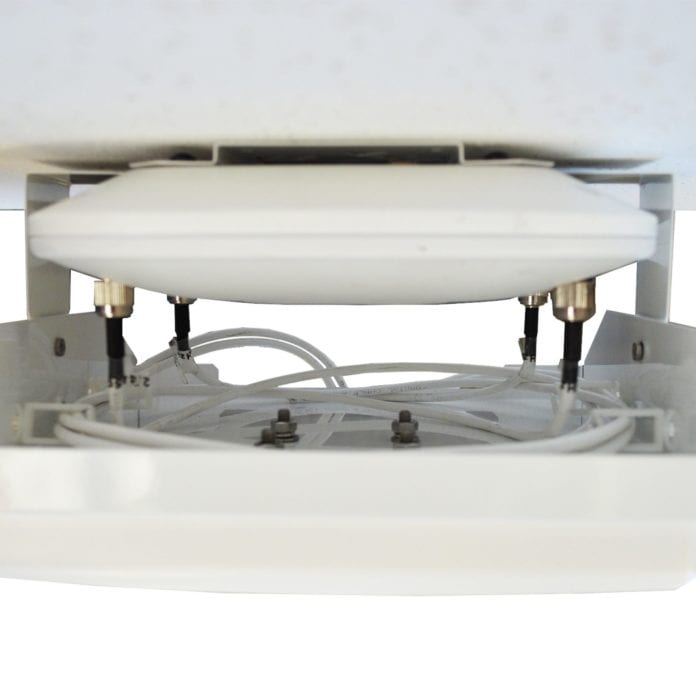Vendors are working to make network equipment more flexible, power efficient and smaller to suit the needs of operators. Many of the newest offerings also are intended for use in improving wireless coverage in large, high-capacity venues such as stadiums, where the need for capacity may vary substantially from one day to the next, but both the venue owners and attendees have high expectations for access.
Recent antenna and equipment launches also reflect that fact that there is no single choice for how to cover a large venue or outdoor area with intensive wireless use, and that traditional cellular, small cell or Wi-Fi options are competing.
Some of the newest products include:
–Galtronics launched an addition to its Extent line, the D5777i with a 30/30-degree narrow beam width meant for large venues where high sectorization is needed in order to support capacity.
–Ventev Wireless, which is a division of Tessco Technologies, expanded its TerraWave antenna portfolio with two high-density antennas: a 4 dBi high-density patch antenna, and 6 dBi high-density patch antenna with a narrower beam width of 55-35-degree in order to reduce the number of users per access point and increase capacity. The company also recently launched a new mount (pictured at upper right with antenna).
–Small cell antennas are also on offer. PCTel introduced a passive intermodulation-rated antenna portfolio, including its 700 MHz/LTE small cell base station antennas and a series of 3G/4G in-building antennas, at this week’s DAS and Small Cell Congress. The rating for PIM signifies that the antennas have already undergone PIM testing on major cellular bands in order to ensure minimal PIM interference in the 3G and LTE cellular ranges.
“With a robust pipeline of PIM-rated products in development, the new in-building and small cell antennas represent our growing commitment to in-building and small cell infrastructure,” said Jeff Miller, president of PCTel Connected Solutions. “PCTel has invested in state-of-the-art design and testing capabilities that will allow us to meet carriers’ exacting requirements for high-performing PIM-rated products that deliver great reception,” added Miller.
Galtronics also said this week that its Pear M5542i antenna has been approved by carriers in Canada and the United States for deployment in small cell and DAS networks. The ceiling mounted antenna covers all LTE frequency ranges, with support for 698-960 MHz and 1710-2700 MHz bands.
–Ruckus Wireless launched the first two models in a new outdoor series of access points with embedded adaptive antennas. The ZoneFlex T300 series of outdoor 802.11ac access points are designed for high-density venues such as stadiums or metro hot zones, the company said, as well as college campuses and business parks. The T300 and T301n access points weigh two and 2.1 pounds respectively, and both have dimensions of less than eight inches wide, 10 inches deep and five inches high. Ruckus is calling them the industry’s smallest and lightest access points.

New antennas, access points focus on large venues
ABOUT AUTHOR
